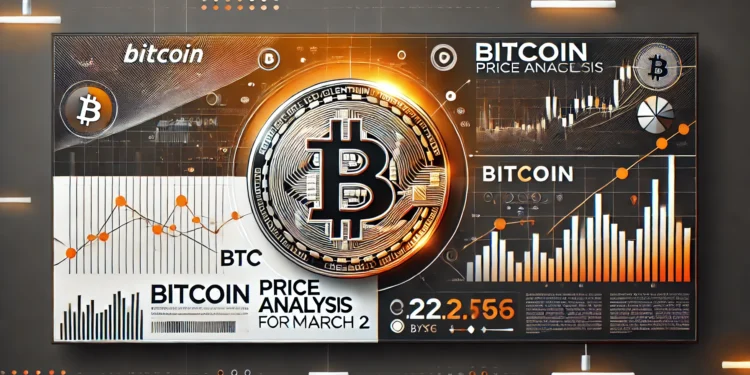Bitcoin holds its value at $85,824 with a minor rise of $593 (0.69%) from its closing price on that day. Bitcoin shows intense instability between its highest and lowest daily price points, which stand at $86,456 and $84,268.
The Bitcoin market has entered a holding phase after hitting a peak before this year. After setting a record price of $109,079 on January 20, 2025 Bitcoin dropped by 24% largely due to global market worries and decreasing investor fear of risk.
Bitcoin stands out in 2025 as one of the leading performers in the market despite its recent price drop. ETF buyers and big investors stay active now but market participants need clear Fed policies and government rules before deciding where Bitcoin will head next.

Bitcoin’s Recent Price Movements and Market Trends
In recent days Bitcoin moved between $80,500 and $87,000 in both upward and downward trends. Traders are watching both economic activity and new rules to decide when to take action in their trades.
After reaching its best level in January 2025 Bitcoin lost its upward push due to several issues:
- Macroeconomic uncertainty: Concerns over consumer spending and AI-driven market corrections have impacted broader financial markets, including cryptocurrencies.
- Profit-taking by institutional investors Many large investors have taken profits following Bitcoin’s recent rally, leading to short-term price corrections.
- Regulatory concerns: While there has been progress in Bitcoin ETF approvals and mainstream adoption, uncertainty surrounding global regulations has created hesitation among investors.
Bitcoin stays strong against challenges but depends on support levels to decide its next major direction.
Technical Analysis: Key Support and Resistance Levels
The way Bitcoin behaves shows it is right now contained in fixed bounds. Bitcoin price movement relies on observing these major trading barriers:
Support Levels:
- $84,730: A crucial short-term support level
- $81,500-$80,500: A major support range; a breakdown here could lead to further declines
- $75,000: A critical long-term support
Resistance Levels:
- $87,500: The first major resistance level Bitcoin needs to break for bullish momentum
- $90,000: A psychological barrier that, if broken, could lead to a stronger rally
- $94,816-$98.177: A strong resistance zone that Bitcoin would need to clear for a full recovery
The Relative Strength Index (RSI) measure of 44.73 indicates neutral market conditions for Bitcoin that are moving toward a bearish outlook. In the near term Bitcoin continues to meet selling pressure since the 50-day moving average now stands at $88,500 above its present value.
To restart its upward movement Bitcoin needs to cross $87,500 and push toward $90,000 to $92,500. The price will likely reach new low points at $80,500-$81,500 when the market value drops below $84,000.
Bitcoin Price Prediction for March 2
The Bitcoin rates will lie between $80,500 and $87,500 today yet traders can shift price directions based on market emotions.
Bitcoin may rise toward $89,000 to $90,000 when substantially above $85,000. The market may push Bitcoin to $80,500 and down to $82,000 if it falls below $84,500.
Bullish Scenario
When Bitcoin records a successful move above $87,500 it might extend its rise until $90,000. Good news about new funds entering the market plus Fed rate reduction actions would act as trigger events to push Bitcoin prices ahead.
Bearish Scenario
When Bitcoin price falls below $84,000 it will likely extend its downward movement to $80,500 or lower. Changing industry perception coupled with increased law rules and lower company purchasing activity can push Bitcoin down towards its lower support levels.
Bitcoin markets experience a holding period now and traders need to monitor essential price points to predict where the price will rise next.
Market Sentiment and Factors Affecting Bitcoin Price
Institutional Demand and ETF Inflows
The approval of Bitcoin spot ETFs by US regulators drove its value upward early in 2025. Investors are now holding their Bitcoin ETF purchases back as they want to see more market trends first. When institutional investors return to the market they will buy more Bitcoin.
Macroeconomic Conditions and Federal Reserve Policy
The Federal Reserve’s interest rate policies greatly influence Bitcoin’s value in the market. The Federal Reserve would help risk assets by cutting interest rates earlier than predicted which benefits Bitcoin. When the Federal Reserve takes a strong monetary tightening approach Bitcoin usually suffers more falling prices.
Regulatory Developments
Governments have yet to establish clear rules that control cryptocurrencies. The start of Bitcoin ETF trading represents a gain for the market but new regulations threaten both the crypto exchanges and their AML compliance standards. Regulatory problems can affect how much Bitcoin is worth in the next few days.
Upcoming Bitcoin Halving in April 2025
In April 2025 Bitcoin will undergo a halving process that lowers the payout to miners from 6.25 BTC to 3.125 BTC per block. The history shows that Bitcoin halvings bring strong market upswings because fewer new coins join the market. The upcoming Bitcoin halving will likely cause Bull markets that push Bitcoin prices to new territory over the rest of 2023.
What’s Next for Bitcoin?
Bitcoin stays in a crucial waiting period between $80,500 and $87,500 price levels. The market will direct Bitcoin towards $90,000 or beyond if it crosses $87,500 successfully. But if it fails to maintain the $84,000 level, the cryptocurrency may drop in value towards $80,500 or lower.
Traders need to follow major economic data releases plus examine Bitcoin exchange-traded fund money movements and official rulings to predict Bitcoin’s next major rally. Although Bitcoin’s near-term price swings are unclear, the future price trend is positive, especially before its halving event in 2025.




